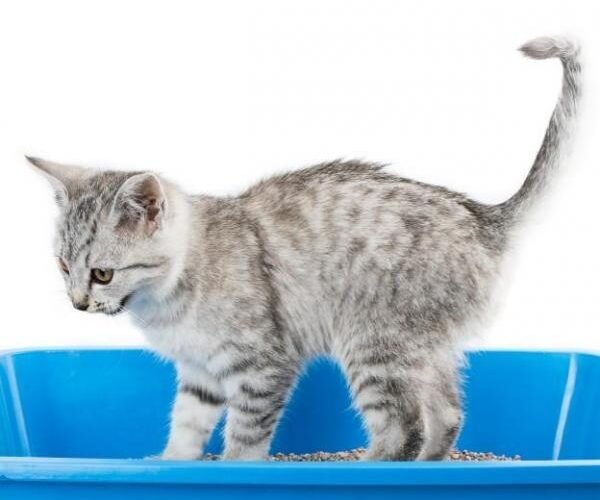When welcoming a new cat into your home, you need to be fully aware that this cat will most likely be undomesticated. This means there are behavioral traits which they will need to develop in order for them to coexist happily and healthily in the home. Generally, using a litter box isn’t so much a learning process as it is something natural which comes during maturation. It is taking the natural habit of your cat, specifically elimination of waste, and encouraging them to perform this habit in a way with which it will feel comfortable and not cause a disturbance to the household. From 4 weeks old, a kitten will start using the litter box instinctively. Due to its hunter instincts, the cat needs to somehow hide the smell of its faeces so that possible “prey” will not detect its presence in the area.
However, this process can sometimes be difficult, so this article we will show you how to litter train a cat if it needs a little push in the right direction.
First Things to Take Into Account:
The type and location of the litter box, as well as the type of litter you use, are crucial for avoiding any problems. Take a look at these options to help your cat urinate and defecate in the proper place:
- The litter box should be large enough so that the cat can turn around inside it, just as it should be deep enough so that the litter doesn’t overspill.
- Consider whether or not to use a cover. It might help to hide the smell of waste and provide privacy, but if your cat is large or long haired it might also make it difficult to use.
- If your cat is small, you must make sure that it can access the litter box without any problems, e.g. being able to climb in over high sides.
- You shouldn’t place the litter box near the cat’s food as they do not like to eat near waste. Instead, put it in a peaceful place where the cat can have privacy, but can still access easily.
- You should choose a suitable litter. Too clumpy will create a mess and too thin will discourage your cat from use. Scented ones are not recommended. If your cat has particularly pungent waste, a little lemon juice or vinegar should neutralize the odor.
- The location of the litter box should be permanent.
- You must remove the faeces every day and change all of the litter at least once a week. However, you shouldn’t clean the litter box with strong cleaning products, as this will deter the cat’s sensitive sense of smell.

My Cat is Still Not Using the Litter Box
Sometimes the cat doesn’t exhibit its innate tendency to use the litter box, but don’t worry – there are some simple tricks to solve this problem:
- Once you have placed the litter box somewhere, you should show it to your cat and move the litter with our hand to mimic their after elimination process.
- If the cat has urinated or defecated outside its litter box, but this location is somewhere which would also be a goo place to house the litter box, a practical and easy solution is to just move the box to this location.
- If your cat is going to urinate or defecate in an unacceptable place, gently pick it up and run to the litter box so it will learn that this is the place to do it.
- For the first few days you can be less strict with the cleanliness of the litter box, allowing the cat to easily detect the scent of its trail and return to its box.
- For kittens that still don’t go to the litter box alone, you should place them inside the box when they wake up and after meals, encouraging them to dig each time.
Whenever your cat uses the litter box you should use positive reinforcement to reward its good decision and encourage habituation. Shouting at or scolding your cat will confuse it more as all they will sense is naked aggression.

If Your Cat Still Refuses to Use the Litter Box…
If you have tried the tips listed above and your cat still doesn’t use its litter box, even after 4 weeks of age (the time at which it begins to develop its instinct), the best thing you can do is go to the vet so that they can perform a complete examination and rule out any diseases. If they have not eliminated for a while, it could be because they have a blockage or condition which might be very painful. Keep an eye out for abnormal vomiting or blood in their urine.

Source: animalwised.com



